
The Twilight Zone is an American media franchise based on the anthology television series created by Rod Serling. The episodes are in various genres, including fantasy, science fiction, absurdism, dystopian fiction, suspense, horror, supernatural drama, black comedy, and psychological thriller, often concluding with a macabre or unexpected twist, and usually with a moral. A popular and critical success, it introduced many Americans to common science fiction and fantasy tropes. The first series, shot entirely in black and white, ran on CBS for five seasons from 1959 to 1964.
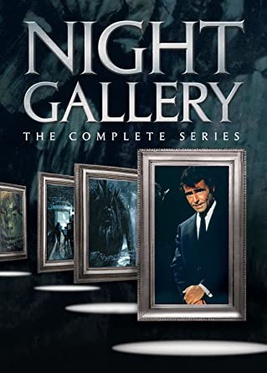
Night Gallery is an American anthology television series that aired on NBC from December 16, 1970, to May 27, 1973, featuring stories of horror and the macabre. Rod Serling, who had gained fame from an earlier series, The Twilight Zone, served both as the on-air host of Night Gallery and as a major contributor of scripts, although he did not have the same control of content and tone as he had on The Twilight Zone. Serling viewed Night Gallery as a logical extension of The Twilight Zone, but while both series shared an interest in thought-provoking dark fantasy, more of Zone's offerings were science fiction while Night Gallery focused on horrors of the supernatural.
A teleplay is a screenplay or script used in the production of a scripted television program or series. In general usage, the term is most commonly seen in reference to a standalone production, such as a television film, a television play, or an episode of an anthology series. In internal industry usage, however, all television scripts are teleplays, although a "teleplay by" credit may be classified into a "written by" credit depending on the circumstances of its creation.
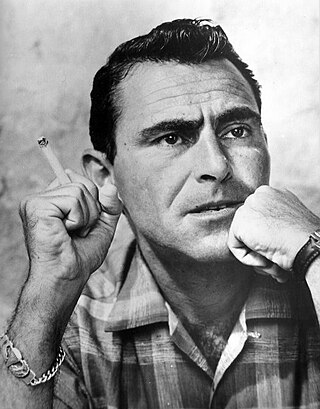
Rodman Edward Serling was an American screenwriter, playwright, television producer, and narrator/on-screen host, best known for his live television dramas of the 1950s and his anthology television series The Twilight Zone. Serling was active in politics, both on and off the screen, and helped form television industry standards. He was known as the "angry young man" of Hollywood, clashing with television executives and sponsors over a wide range of issues, including censorship, racism, and war.
"Walking Distance" is episode five of the American television series The Twilight Zone. It originally aired on October 30, 1959. The episode was listed as the ninth best episode in the history of The Twilight Zone by Time magazine.
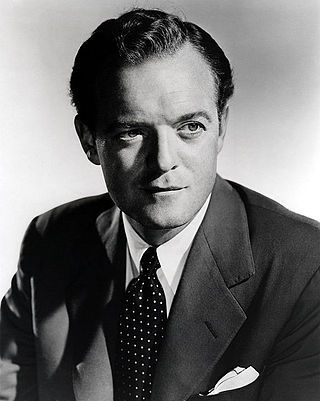
Emmett Evan "Van" Heflin Jr. was an American theatre, radio, and film actor. He played mostly character parts over the course of his film career, but during the 1940s had a string of roles as a leading man. Heflin won the Academy Award for Best Supporting Actor for his performance in Johnny Eager (1942). He also had memorable roles in Westerns such as Shane (1953), 3:10 to Yuma (1957), and Gunman's Walk (1958).

Edward James Begley was an American actor of theatre, radio, film, and television. He won an Academy Award for Best Supporting Actor for his performance in the film Sweet Bird of Youth (1962) and appeared in such classics as 12 Angry Men (1957) and The Unsinkable Molly Brown (1964). He was nominated for an Emmy Award for his portrayal of Matthew Harrison Brady in a television adaptation of Inherit the Wind. He is the father of actor and environmental activist Ed Begley Jr.
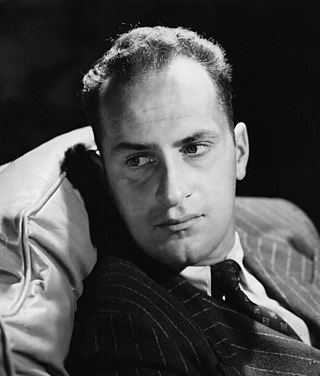
Francis Xavier Aloysius James Jeremiah Keenan Wynn was an American character actor. His expressive face was his stock-in-trade; and though he rarely carried the lead role, he had prominent billing in most of his film and television roles.
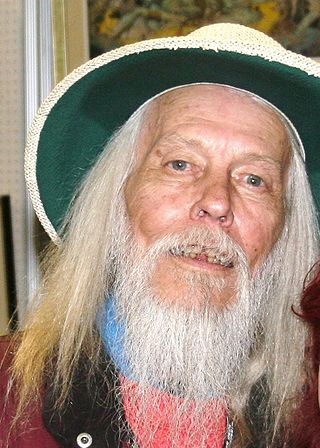
George Clayton Johnson was an American science fiction writer, best known for co-writing with William F. Nolan the novel Logan's Run, the basis for the MGM 1976 film. He was also known for his television scripts for The Twilight Zone, and the first telecast episode of Star Trek, entitled "The Man Trap". He also wrote the story and screenplay on which the 1960 and 2001 films Ocean's Eleven were based.

Playhouse 90 was an American television anthology drama series that aired on CBS from 1956 to 1960 for a total of 133 episodes. The show was produced at CBS Television City in Los Angeles, California. Since live anthology drama series of the mid-1950s usually were hour-long shows, the title highlighted the network's intention to present something unusual: a weekly series of hour-and-a-half-long dramas rather than 60-minute plays.

The Twilight Zone is an American science fiction horror anthology television series created and presented by Rod Serling, which ran for five seasons on CBS from October 2, 1959, to June 19, 1964. Each episode presents a stand-alone story in which characters find themselves dealing with often disturbing or unusual events, an experience described as entering "the Twilight Zone", often with a surprise ending and a moral. Although predominantly science-fiction, the show's paranormal and Kafkaesque events leaned the show towards fantasy and horror. The phrase "twilight zone", inspired by the series, is used to describe surreal experiences.
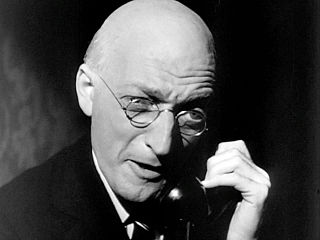
Everett H. Sloane was an American character actor who worked in radio, theatre, films, and television.
"Requiem for a Heavyweight" is a teleplay written by Rod Serling and produced for the live television show Playhouse 90 on 11 October 1956. Six years later, it was adapted into the 1962 feature film of the same name starring Anthony Quinn, Jackie Gleason, Mickey Rooney, and Julie Harris.
Twilight Zone: Rod Serling's Lost Classics is a 1994 American made-for-television fantasy supernatural horror film consisting of two stories by Rod Serling. The film was co-produced by Serling's widow Carol Serling. Reportedly, she found the two pieces in a trunk in the family's garage.
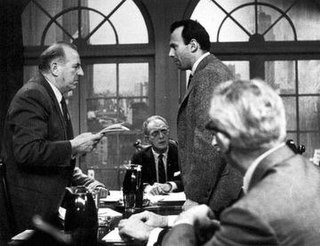
"Patterns" was an American television play broadcast live on January 12, 1955, as part of the NBC television series, Kraft Television Theatre. Because of its popularity, it was restaged on February 9, 1955.

Flight from Glory is an American B movie about a run-down air cargo company in the Andes. It was directed by Lew Landers, and starred Chester Morris, Whitney Bourne, Onslow Stevens and Van Heflin. When released on August 20, 1937, Flight from Glory was considered one of the films that broke new ground in "pioneering airline sagas", comparing favorably to big-budget features such as 1936's Thirteen Hours by Air.
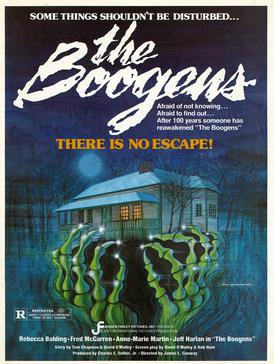
The Boogens is a 1981 American monster film directed by James L. Conway and starring Rebecca Balding, Fred McCarren, Anne-Marie Martin, Jeff Harlan, John Crawford, Med Flory, Jon Lormer, and Scott Wilkinson. The title refers to scaly turtle-like monsters that are released from an abandoned and boarded-up silver mine, and begin to wreak havoc.
Certain Honorable Men is a 1968 American TV movie starring Van Heflin and Peter Fonda. It was written by Rod Serling.

"A Town Has Turned to Dust" is the 38th episode of the second season of the American television play broadcast live on June 19, 1958, as part of the second season of the CBS television series Playhouse 90. Rod Serling wrote the teleplay, and John Frankenheimer directed. Rod Steiger and William Shatner starred.
"The Rank and File" is an American television play broadcast on May 28, 1959 as part of the CBS television series, Playhouse 90. The cast includes Van Heflin and Charles Bronson. The teleplay was written by Rod Serling













